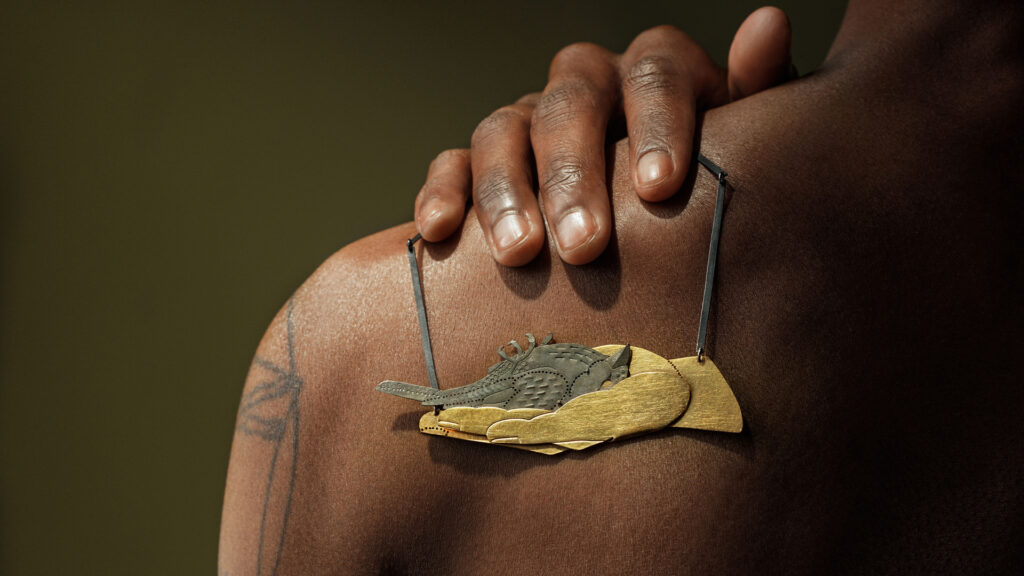Pablo Picasso’s silver plates
By Matthew Burgess
A prolific innovator of art forms and practice, Pablo Picasso’s impact on contemporary art is unparalleled in significance, inspiring artists such as David Hockney and Jasper Johns, and no doubt many exhibitors from the Goldsmiths’ Fair past and present. Known worldwide and celebrated across so many mediums, his versatility and experimentation touched every corner of art, from traditional painting, printmaking and ceramics, to monumental murals and intricate jewellery.
While many will know of his beautiful and prolific work in pottery throughout the course of his career, his work in silverware was limited to just 24 designs. In fact, it was his work in ceramics that allowed for his drawings and designs to translate onto this challenging medium.
Conceived between 1956 and 1961, master goldsmith and close friend of Picasso, François Hugo was commissioned to execute his designs with the help of his son Pierre at their atelier in Aix-en-Provence. The collaboration gave birth to a series of platters, dishes, medallions and statuettes in silver, fewer still in gold, inspired by the opulent dishes of the Renaissance period. The plates were adorned with mythological subjects including nymphs, satyrs and centaurs, as well as playful designs paying homage to the artist’s last love and muse, Jacqueline Roque.
Using repoussé and chasing techniques to great effect to capture the unique designs on the precious metal, the silverware that were produced command sums mirroring their magnificence at auction houses around the world to this day.
These ancient techniques, formed by carefully hammering the metals to create a low relief or indentation in the object, are simple in complexity but can be used to great effect. Within the Company’s Collections, three pieces stand out as excellent comparisons to Picasso’s plates in technique, style, and innovation, with very different results.

This gold medal created by Louis Osman for the Goldsmiths’ in 1973 bears cast designs on both sides. Wax cast and then finished with repoussé, both the coat of arms and the crest of the demi-virgin have a striking resemblance to the minimalism of Picasso’s iconic, linear style. The distillation of the mythical form also mirrors that found in the Picasso plates, echoing ancient calligraphic cave paintings of legendary animals and deities. The medal’s casting is unusual for its size at just 7cms in diameter, and more interesting still, Osman has finished the piece with a flourish, accentuating the gold lines further after casting with subtle chasing.
On the other end of the scale, measuring 53cm in diameter, Gerald Benney’s ‘Beetle Bowl’ (1962) is of a similar size to those made by Picasso and Hugo, and was created during the same period of art history in the late 1950s to early 1960s. The bowl is a stunning example of a multitude of techniques including casting, chasing and spinning with pierced cover and silver gilt, peridot set ‘eyes’.

Like the period itself, both artists are very well known in their respective industries for innovation and stylisation. Both artists sought to create pieces equally modern and identifiable to their time, with clear minimalist influence. Indeed, Benney’s signature style of ‘Benney bark finish’ much like Picasso’s influence on art, is now a trademark design that is replicated industry wide.
At the time, and in the interest of pushing creative boundaries, Benney’s eye-catching ‘Beetle Bowl’ was commissioned by the Goldsmiths’ Company to feature in prestigious exhibitions around the world to promote ground-breaking, contemporary British design. The bowl is still seen as a pioneering piece of silverware to this day and is a darling of the Goldsmiths’ collection.
A more modern comparison, Miriam Hanid’s ‘Water Jug’ (2015), is an exquisite example of the similar skilled techniques used by Picasso and Hugo. Expertly using hand chasing and repoussé techniques to define and highlight the details on the ridges, the finished object is another spectacular item to the Company’s collection. Miriam Hanid continues to create beautiful silverware to this day.
The complete set of Picasso silverware achieved £1,467,000 when it went on sale as part of Sotheby’s major spring evening sale ‘Modern Renaissance: A Cross-Category Sale’ on 25 March 2021.
Information on any pieces from the Goldsmiths’ Company Collection are available upon request.
Keep up to date with the Fair
Join our mailing list to receive exclusive event invitations, industry news and be the first to hear about Goldsmiths’ Fair updates.
Subscribe



